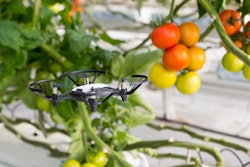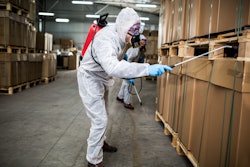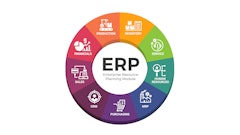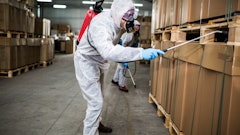
Often consequences befall individuals other than the perpetrator of the bad action. News headlines are teeming with product recalls, foodborne illnesses and sickened diners, most often naming the restaurant, the retailer or food brand company where the consumer accessed the tainted food. However, the food safety failure may have occurred at any point along the supply chain as the food made its way to the final point of consumption.
The lesson resonates with stakeholders across the food value chain -- the food safety barricade is only as strong as its weakest link. From a brand equity and trust standpoint, restaurants and foodservice retailers have the most to lose, as that is the point at which the consumer obtains the tainted food. However, logistics companies, transportation providers and farmers should also sit up and take notice, as they may also lose trust among their customers or become the subject of lawsuits.
To prevent food safety breakdowns, it’s first important to understand the potential risks along the supply chain as food moves from farm to fork. Stakeholders across the supply chain must collaborate to form a strong front line against foodborne illnesses. Consider some of the top risks as foods move through the supply chain.
Food held at improper temperatures. Every stakeholder must keep perishable items at proper temperatures to help ensure product integrity. In today’s world, foods are transported long distances via refrigerated trucks, often being loaded and unloaded more than once, moving off of one vehicle into a storage unit and then back onto another vehicle. Malfunctioning refrigeration equipment or failure to rapidly move perishable items from refrigerated trucks to refrigerated storage units can compromise food integrity.
Mislabeling or misrepresentation. Mislabeled food products may result in anything from overpayment for a product to dangerous consequences to consumers. Whether purposeful or accidental, improperly labeled foods can trigger life-threatening allergic reactions or consumption of dangerous elements. Proper labeling of food items is essential to food safety.
Mishandling. Mishandling food may result in cross-contamination and foodborne illness. Failure to follow proper hand-washing protocols, keep hot foods hot and cold foods cold, or properly sanitize surfaces between preparation of different foods are examples of mishandling. The risk of mishandling has surged due to staffing shortages in recent months.
Failure to offer traceability. In case of a foodborne illness outbreak, the first action is to trace the potentially infected ingredients to determine how much was distributed and to which locations. If food manufacturers don’t have that information, they cannot accurately recall the contaminated product or communicate specifics about the product at risk. Traceability of food items by batch from the point of origin to the final restaurant or retail site is a critical capability in the fight for food safety.
With these common points of failure in mind, the good news is that better food safety is achievable with specific, directed actions and capabilities. Understand four steps stakeholders in the food supply chain can take to reduce foodborne illness and contamination incidents.
1) Leverage third-party verification. In light of the complex supply chains, buyers can’t have insight into all of their suppliers’ operations. Third-party verification serves as an excellent way for suppliers to provide objective evidence that their operation achieves specific food safety criteria and continually adheres to best practices. In food service retail establishments and restaurants, third-party verification can help with preparation for U.S. Food and Drug Administration audits and evaluate the effectiveness of food safety training and management practices. Audits can also reduce the likelihood of mislabeled or intentionally tainted products.
2) Train employees. Everyone who handles or oversees the processing of food items should be trained on the fundamentals of food safety, including farmers, truck drivers, plant employees and servers. This is particularly important in the current environment, where turnover is high and staff shortages persist. After understanding the “why” of food safety practices, employees are more likely to comply. Training reduces inadvertent risk to foods and may have an enormous impact by empowering individuals with the opportunity to take corrective action.
3) Go digital. Technology unlocks transparency in today’s world of global shipments and complex supply chains. Internet of Things (IoT) devices can help ensure and document proper temperature control on vehicles and in warehouses. Wireless barcode scanning can track the location of items and their path as they make their way from farm to food service destination. Digital inventory systems closely follow food items throughout the process, providing traceability in case of contamination. Consider investing in technology that can help document and systematize food safety best practices in the digital age.
4) Be proactive. In the unfortunate case of mishandled food, immediate communication with other stakeholders is vital. Whether a transportation company identifies a refrigerated trailer unit that has malfunctioned, a restaurant suspects food mishandling or a farmer learns of a pest problem that could compromise food integrity, it’s the responsibility of these individuals and organizations to communicate proactively the risk and amount of food impacted. Open and proactive communication can mean the difference between potentially sick consumers and a brand that earns more trust and loyalty.
Every stakeholder along the supply chain must take responsibility for food safety. Without proper treatment and care of food from harvest to the time it reaches the diner’s mouth, food can become contaminated or compromised. While foodservice establishments place a great deal of emphasis on food safety training, logistics and transportation providers, farmers and other handlers play an equally important role. Together, we can create a strong barricade against foodborne illness.

















